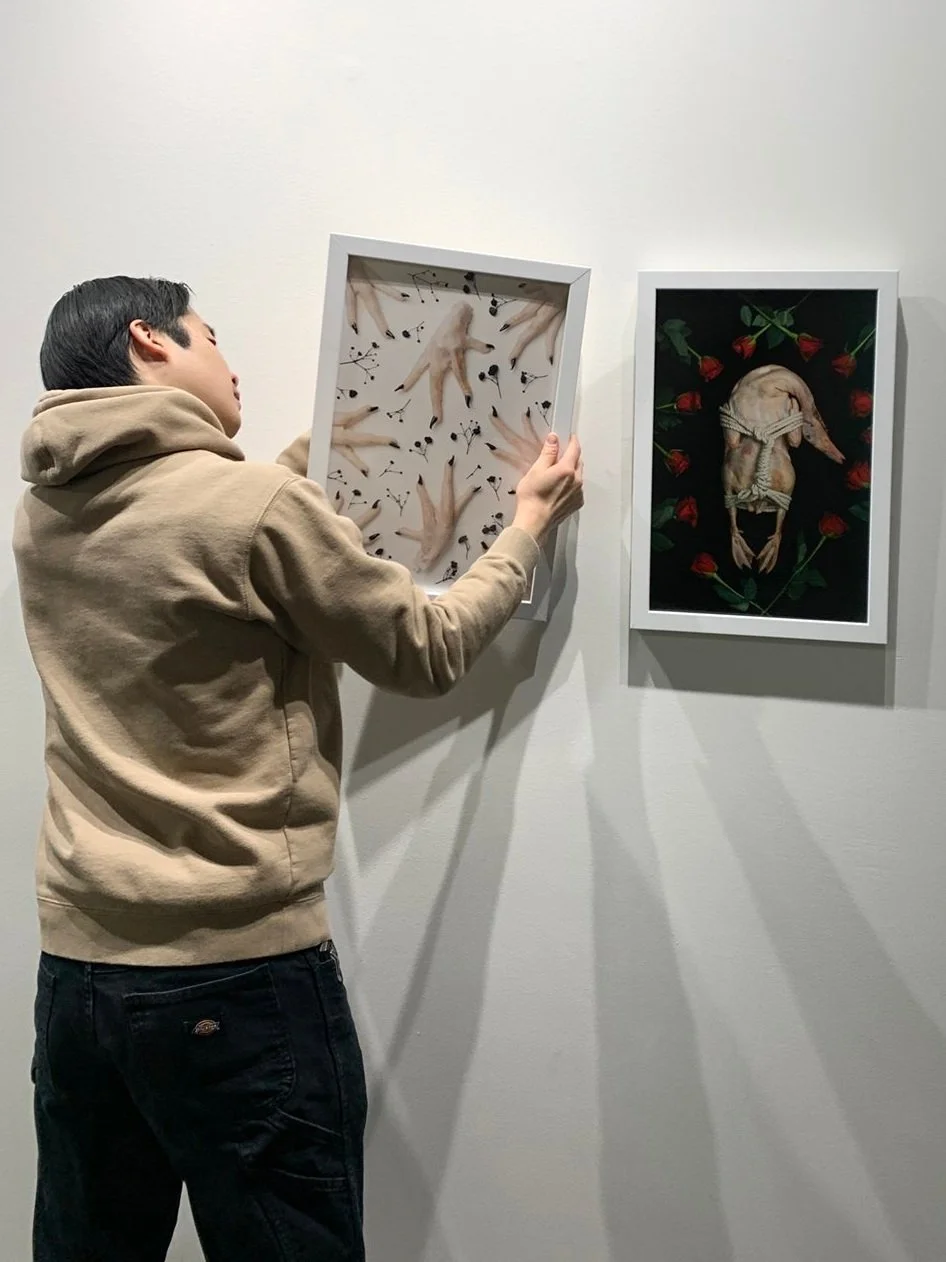Duality
Duality: Contemporary Works by Indigenous Artists
Longmont Museum
400 Quail Road, Longmont, CO 80501
January 28-May 22, 2023
Curated by Gregg Deal
Admission: $8 adults, $5 students/seniors, ages 3 and under free, members free, $0.25 with a qualifying EBT or SNAP card. Second Saturday of each month is a free day.
Review by Paloma Jimenez
Duality: Contemporary Works by Indigenous Artists, at the Longmont Museum, gathers together artists who navigate the societal and material complexities of existing in the United States as members of a group whose stories have largely been told through a colonial lens. In a protest against homogeneous, mainstream descriptions of Indigenous people, Gregg Deal, the curator and a participating artist, orchestrates an emotionally tangible exhibition featuring the works of JayCee Beyale, Julie Buffalohead, himself, Nicholas Galanin, Jeffrey Gibson, April Holder, Chelsea Kaiah, Cannupa Hanska Luger, Natani Notah, Jamie Okuma, Virgil Ortiz, Danielle SeeWalker, and Steven Yazzie.
A view of of the exhibition Duality: Contemporary Works by Indigenous Artists. Image courtesy of the Longmont Museum.
The artists in Duality inhabit a space outside of tidy art historical categories, deftly balancing contradictions on the tip of a feather. Abstraction merges into studied representation, functional objects radiate with detailed ornamentation, and sorrow sits beside humor.
Virgil Ortiz, Velocity Jar, 2012, clay, slip, and wild spinach paint. Image by Paloma Jimenez.
Virgil Ortiz’s burnished black and cream clay sculptures at the entrance of the show seem to simultaneously narrate past events and an ominous future. A streamlined, helmeted figure bursts through the geometric lines of the traditionally-shaped vessel in Ortiz’s Velocity Jar, a disruption of preconceived formalities.
Jamie Okuma, Common Ground: Culture isn’t Black and White, 2020, cradleboard and mixed media. Image by Paloma Jimenez.
Jamie Okuma also uses traditional craft to deliver a more contemporary message in Common Ground: Culture isn’t Black and White. The beaded cradleboard is a collision of natural motifs and pop culture references, standing as a direct confrontation to any stereotypes.
Gregg Deal, Visual Blood Quantum Color Chart, 2022, acrylic paint, plastic, bullet casings, and horsehair on wood cabinet. Image by Paloma Jimenez.
Gregg Deal’s curatorial statement explains, “Native people live within the distorted perception of our existence, rooted in stereotype, historical inaccuracies, embellishments, or downright lies hundreds of years in the making.” His Visual Blood Quantum Color Chart reconfigures the imagery from The Indian in the Cupboard, a 1980 fantasy book later adapted into a film, to explain the diverse reality of Indigenous identity—Deal paints the figurines in a variety of flesh tones, rather than leaving them the factory-issued sienna.
Danielle SeeWalker, But I Have Something to Say, 2023, aerosol, acrylic, oil, and oil stick on canvas. Image by Paloma Jimenez.
Danielle SeeWalker approaches the toll of society’s misrepresentations through emotive paintings created with aerosol, acrylic, oil, and oil stick. Her mouthless figures expose the erasure of Indigenous voices whose images have long been misused for profit and harmful caricature. Animated neon braids and buoyant geometry assert a new message pleading to be heard.
A still image from Cannupa Hanska Luger’s Future Ancestral Technologies: New Myth, 2021, video. Image courtesy of the artist.
Material animacy persists throughout the show, with many of the artists favoring a multimedia approach to creation. Cannupa Hanska Luger’s video piece entitled Future Ancestral Technologies: New Myth follows two figures clothed in kaleidoscopic fiber constructions as they undergo cryptic preparations to repair humanity’s relationship with water. The immensity of such a task must be met with the appropriate attire.
Jeffrey Gibson, Burn Baby Burn, 2015, repurposed wool army blanket, canvas, glass beads, plastic beads, copper jingles, nylon fringe, and artificial sinew. Image by Paloma Jimenez.
A repurposed wool army blanket, canvas, glass beads, plastic beads, copper jingles, nylon fringe, and artificial sinew coalesce into a rhythmic banner in Jeffrey Gibson’s Burn Baby Burn. The adjacent “Do Not Touch” sign recognizes the immediate urge to experience the piece in motion.
Natani Notah, Outgrowth, 2022, White Cleveland Indians MLB Stitched Logo T-shirt, zip ties, acrylic paint, and hook. Image by Paloma Jimenez.
Movement in brushstrokes, gestures, and materials maintains the visual pace of the exhibition. Natani Notah presents Outgrowth, a white Cleveland Indians Major League Baseball T-shirt adorned with subtly shifting zip ties. The spiky apparition lingers, as Cleveland has finally changed their mascot to the Guardians after continued objections from the Indigenous community.
JayCee Beyale and Porfidia Beuke, Sa’ah Naaghái Bik’eh Hózhóó, 2023, ribbon, sand, and eagle feather. Image by Paloma Jimenez.
Towards the center of the exhibition, JayCee Beyale has installed Sa’ah Naaghái Bik’eh Hózhóó. Ribbons hang from the ceiling in a circle with a singular eagle feather floating in the middle and passing visitors keep the piece in constant motion. A harmonious directional pattern swirls in the sand below. It reflects a larger philosophy of embracing the cyclical and ever-changing nature of life.
A view of the exhibition Duality: Contemporary Works by Indigenous Artists with works by the curator Gregg Deal in the foreground. Image courtesy of the Longmont Museum.
Duality offers a diverse array of material expertise applied towards establishing a new image of Indigenous identity in the United States. Protest meets poetry in the artists’ confident restructuring of inaccurate representations. Gregg Deal invites us to listen and to re-envision our perceptions of the people of the First Nations.
Paloma Jimenez is an artist, writer, and teacher. Her work has been exhibited throughout the United States and has been featured in international publications. She received her BA from Vassar College and her MFA from Parsons School of Design.

















